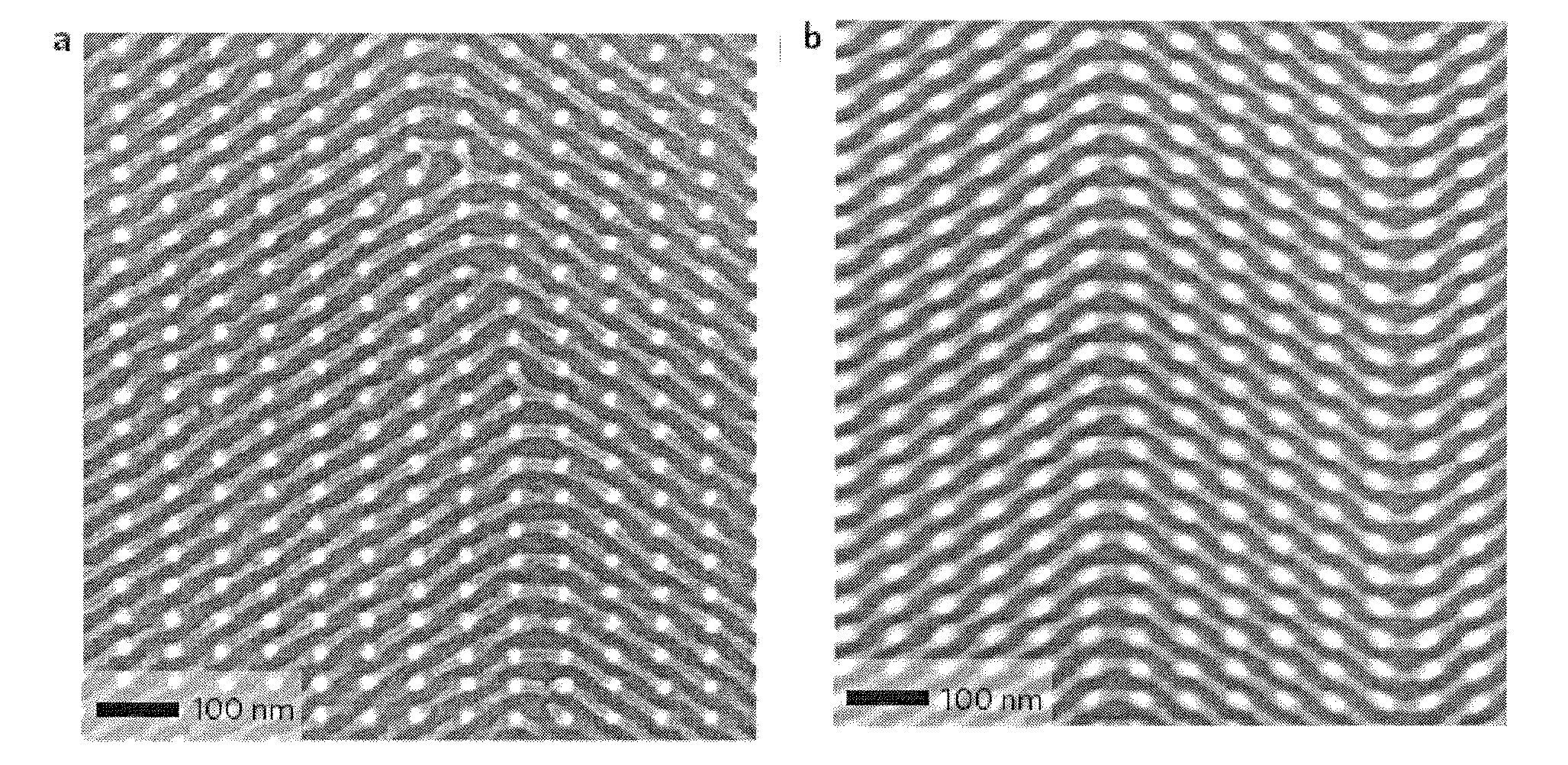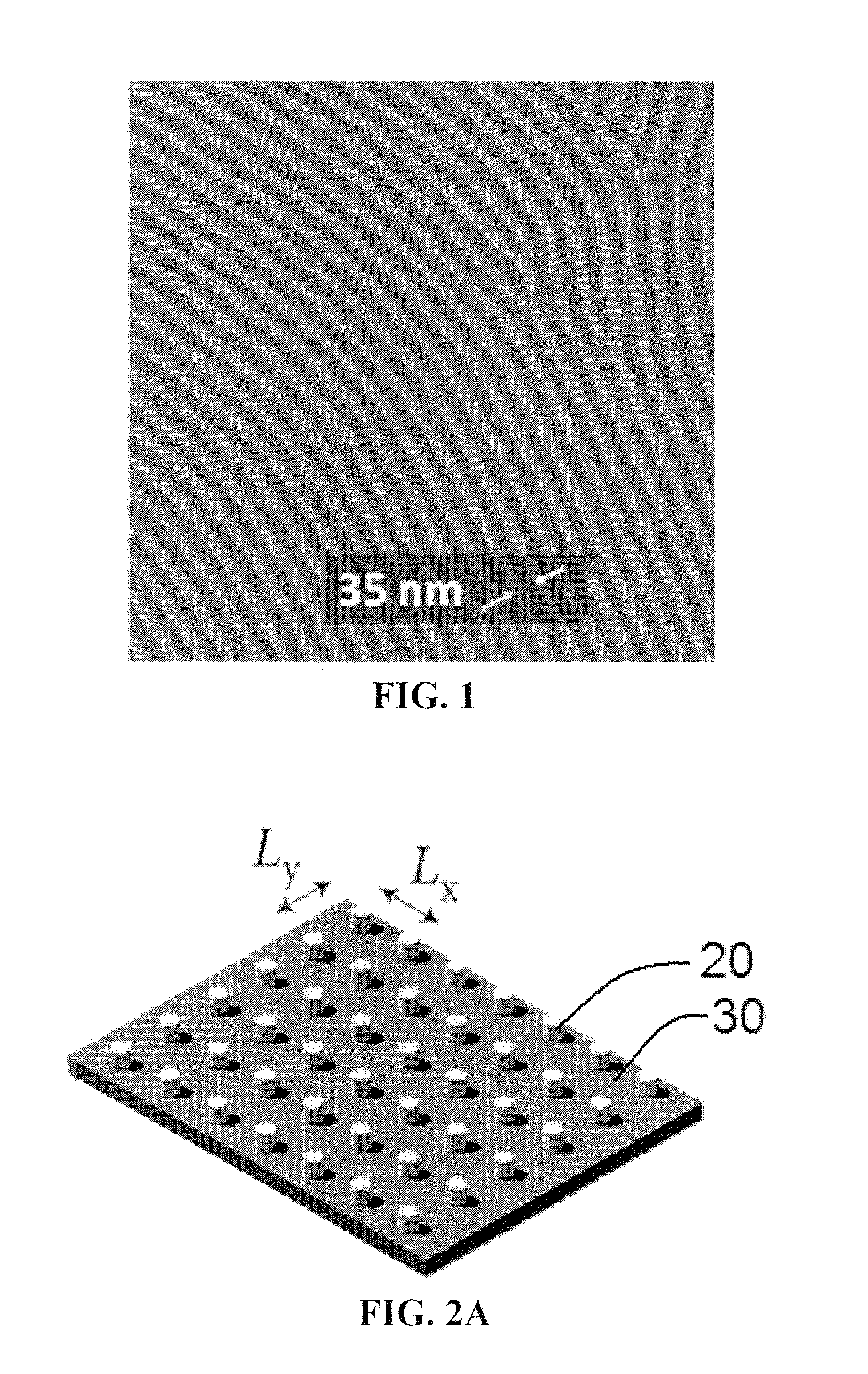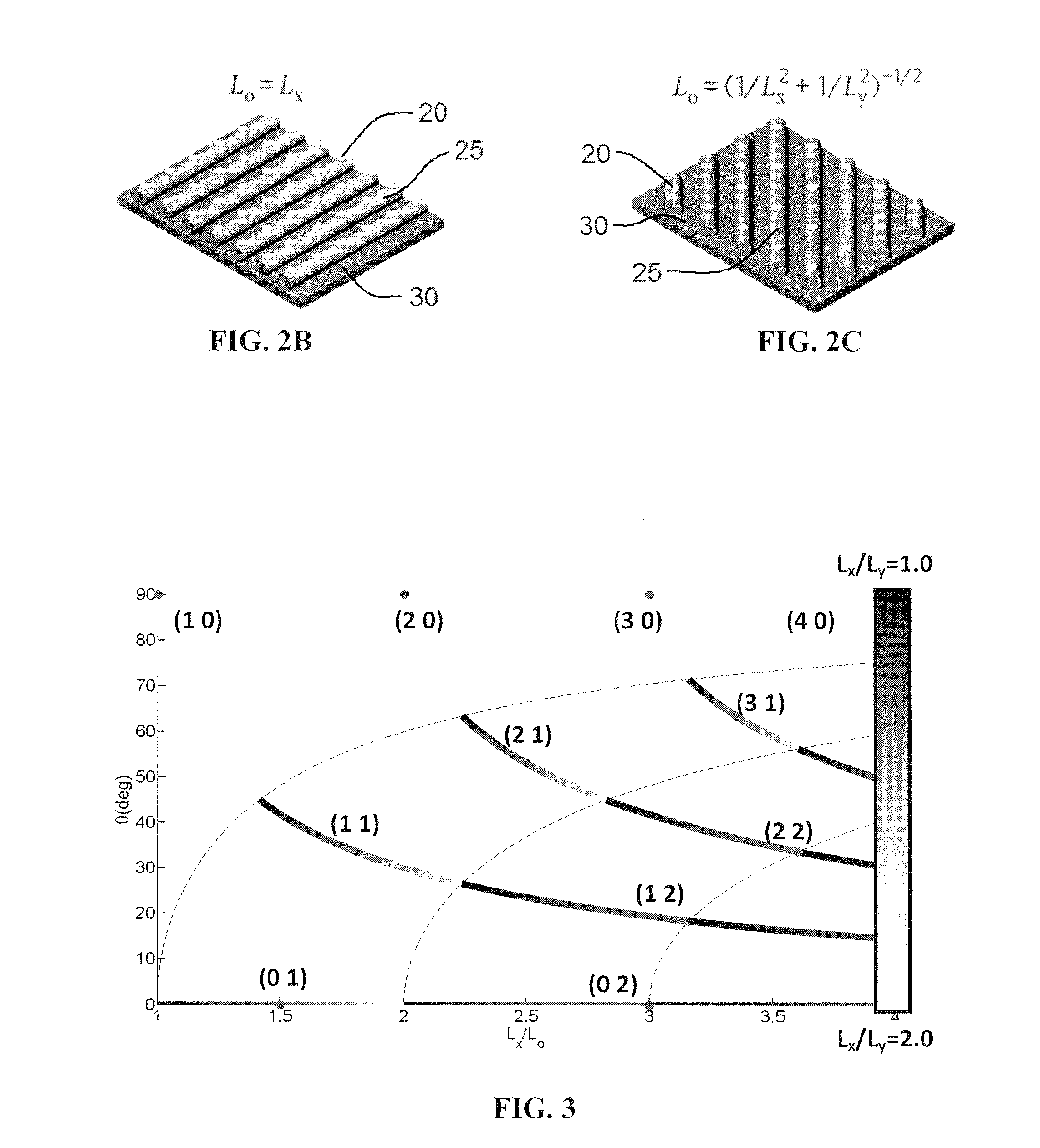Guided self-assembly of block copolymer line structures for integrated circuit interconnects
a technology of integrated circuits and line structures, which is applied in the direction of photomechanical treatment originals, instruments, photomechanical apparatus, etc., can solve the problems that the shape of the post can affect the direction of self-assembly structures, and achieve the effect of reducing the density of ebl-written features, templating complex pattern arrangements, and significantly reducing the time to form patterns
- Summary
- Abstract
- Description
- Claims
- Application Information
AI Technical Summary
Benefits of technology
Problems solved by technology
Method used
Image
Examples
example methodology
n
[0070]The templates were fabricated using electron beam patterning of hydrogen silsesquioxane (HSQ), a negative-tone electron resist. HSQ films (XR-1541 2% solids from Dow Corning) were spun coated to a thickness of 35 nm on silicon substrates. Single-pixel dots, or short dashes (consisting of a short single-pass line) were exposed in a Raith 150 electron-beam lithography tool at 30 kV acceleration voltage. The samples were developed in a high-contrast developer system to remove unexposed resist and to reveal the topographical nanostructures. The sample was further treated with oxygen / helium plasma (50 W, 2 min) to remove possible organic residues and to completely convert the HSQ structures into silicon oxide.
Example Methodology—Block Copolymer Self-assembly
[0071]The topographically patterned substrates were functionalized with a PDMS brush by spin coating a 30-nm layer of hydroxyl-terminated homopolymer (PDMS-OH, 5 kg / mol, Polymer Source Inc.), annealing at 130° C. for 3 hours, a...
PUM
| Property | Measurement | Unit |
|---|---|---|
| angles | aaaaa | aaaaa |
| diameters | aaaaa | aaaaa |
| heights | aaaaa | aaaaa |
Abstract
Description
Claims
Application Information
 Login to View More
Login to View More - R&D
- Intellectual Property
- Life Sciences
- Materials
- Tech Scout
- Unparalleled Data Quality
- Higher Quality Content
- 60% Fewer Hallucinations
Browse by: Latest US Patents, China's latest patents, Technical Efficacy Thesaurus, Application Domain, Technology Topic, Popular Technical Reports.
© 2025 PatSnap. All rights reserved.Legal|Privacy policy|Modern Slavery Act Transparency Statement|Sitemap|About US| Contact US: help@patsnap.com



